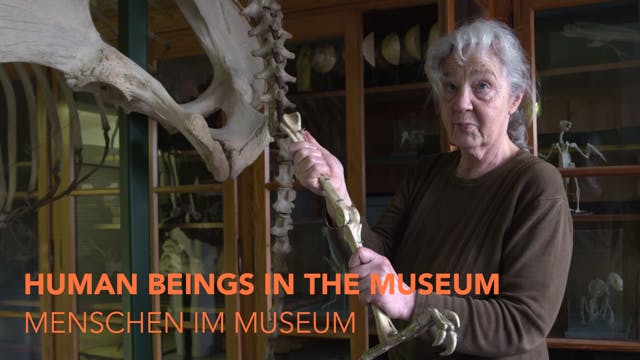Susan Ross Sketches
New Releases
•
41m

For nearly four decades, Susan Ross spent summers in Northern Ontario reserves and Inuit communities in Nunavut, where she drew thousands of sketches, mainly portraits of children, youth, and Elders. The sketches from each community visited by Ross is reproduced in the form of a short movie.
Susan Ross was born in Port Arthur in 1915. Growing up, she was inspired by her famous uncle, Robert Flaherty (Nanook of the North), who spent his lifetime documenting indigenous people through photography and film.
In the 1950s, Susan met Sheila Burnford who had moved to Port Arthur from Great Britain in 1948. The two women became close friends and they spent time at the Flaherty’s Whitefish Lake hunting cabin where they first met Anishinaabe wild rice harvesters. They were invited to visit the rice harvesters’ camp across the lake so Susan could sketch them. It launched a lifetime of friendships and Susan’s most important work as an artist. In 1961, Sheila wrote The Incredible Journey, which became an international bestseller translated into more than 24 languages and then a popular Disney movie. She even included a scene about the animals meeting the Anishinaabe wild rice harvesters in the novel. For the next decade and more, Sheila and Susan spent summers on remote reserves in Northern Ontario or in the Arctic. As a result of these travels, Sheila published two non-fiction books, Without Reserve and One Woman’s Arctic, which Susan illustrated. Susan continued to travel to the Arctic and sketch for as long as she could. Her sketches, prints and paintings remain an extensive visual diary of her travels and her interactions over four decades. In 2006, Susan Ross was given the Order of Canada in recognition of her contribution as a painter and a supporter of indigenous artistic expression.
Time Stamps
Susan Ross Paintings : 00:00
Pond Inlet : 18:00
Pangnirtung : 25:45
Cape Dorset : 29:00
Coppermine, Holoman Island: 33:30
Up Next in New Releases
-
Human Beings in the Museum (Menschen ...
Museumization is stagnation, at least when understood in the traditional sense. Certain things are removed from their everyday existence and declared to be something special. From now on, its role is to be looked at, understood and often revered. In natural history museums, the moment of standing...
-
CAN ART STOP A BULLET: William Kelly'...
William Kelly, widely considered the social conscience of Australian art, once said: “Art can’t stop a bullet, but it can stop a bullet from being fired.”
Can it?
Filmed on five continents, with contributions from over 20 artists, thinkers and activists, this documentary explores the power of art... -
Arkadaşloch - Nobody's Problem
“Arkadaşloch – Nobody’s Problem” is an essay documentary film which tells the story of Özgür Kal who was deported from Germany to Turkey, and depicts his self-transformation from being the poster-child of failed integration to becoming a family-oriented business owner in Antalya. Based on Nilay K...



